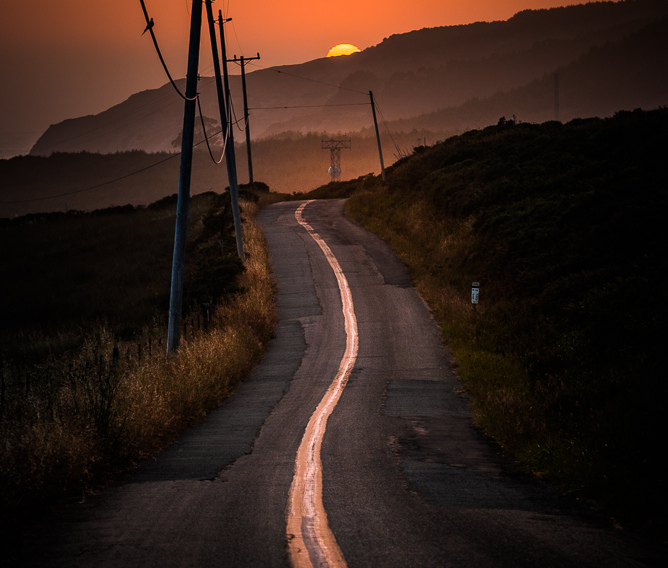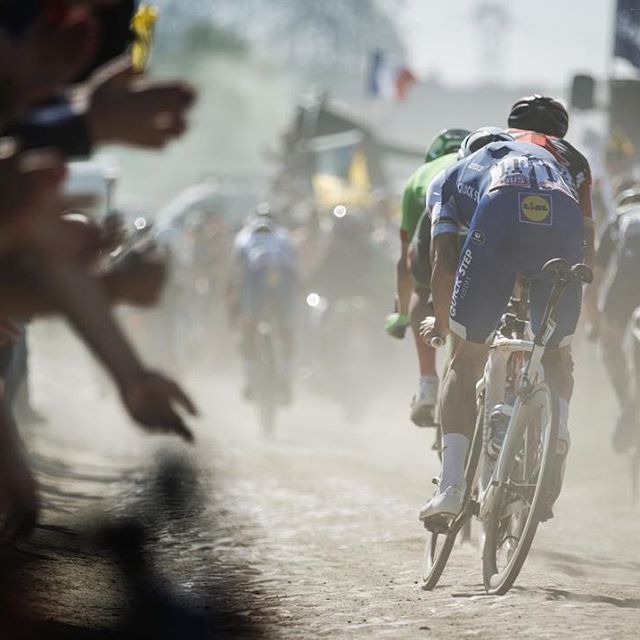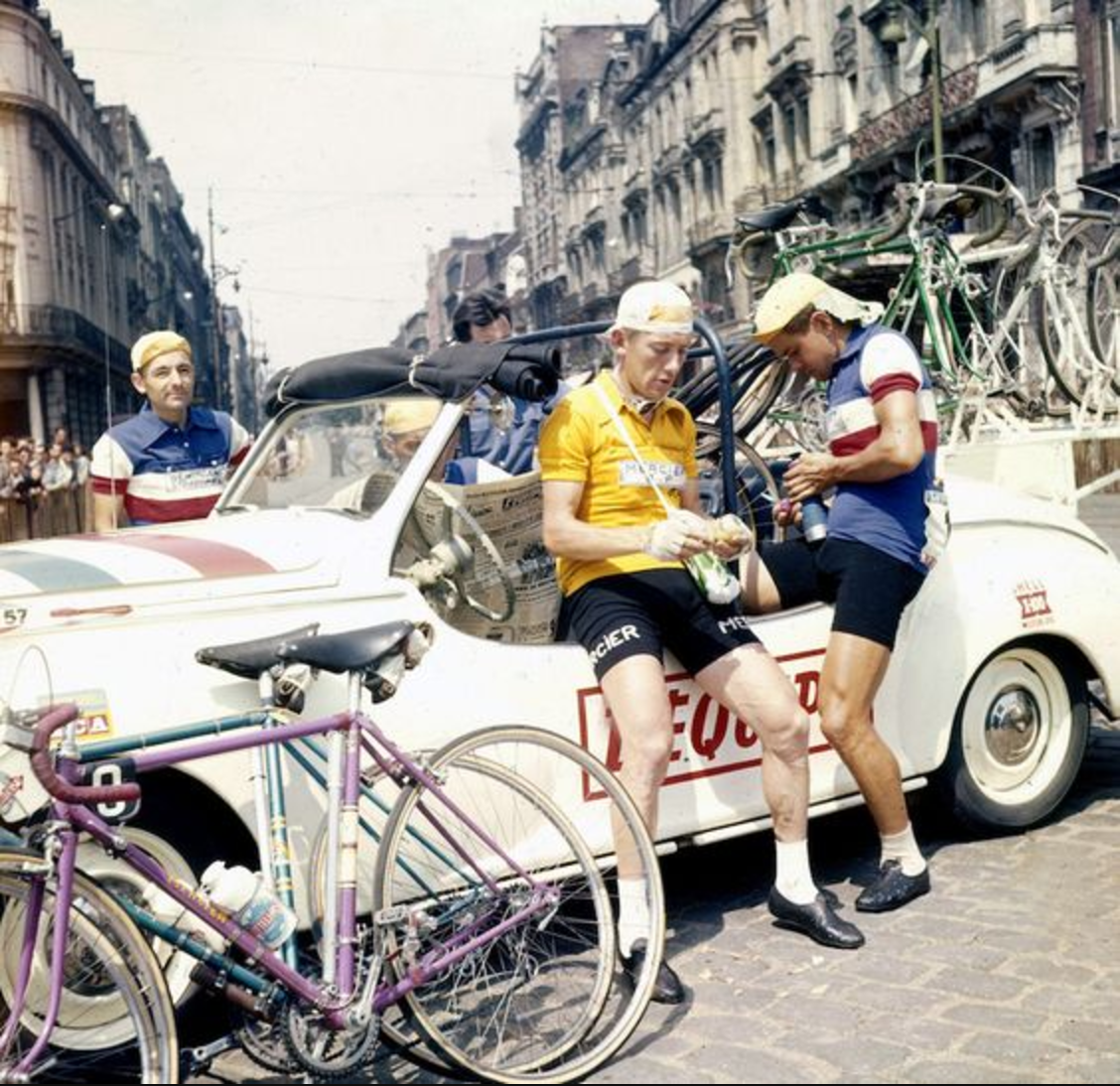Anticipation Shift
I still feel that variable gears are only for people over forty-five. Isn’t it better to triumph by the strength of your muscles than by the artifice of a derailleur? We are getting soft… As for me, give me a fixed gear!
– Henri Desgrange
Whenever I encounter a challenging thought or idea, I recoil instinctively. On impulse, I assume I’m an expert in the matter and proceed as usual, no worse for the wear. The secret to success is your ability to overcome adversity, after all. Another secret to success, if we are allowed two on the same day, is to always take the advice of people on the internet, so long as you sort through all the opinions and cherry-pick the ones you already agreed with.
While I’m not an expert on taking advice, I am a bit of a virtuosity when it comes to the matter of giving it – especially when it is unsolicited. Please note, however, that while I am not drunk, I have a bit of a nasty case of manflu, a fact which I am certain will make me even more trustworthy.
As any fool can see, poor old Henri – however brilliant he was – was completely bonkers (genius and insanity often occupy the same mind). Despite that, there is a thread of truth to his reasoning, which is to say that gears are often used as a psychological tool rather than a mechanical one in order to tackle the various gradients we encounter during our rides.
We typically encounter a hill from some distance off, rearing up as though some careless road engineer had forgotten to tack the other end down. And, more often than not, we respond with the impulse to deploy the Anticipation Shift: downshifting prematurely in response to the sight of a big climb. Click-click-click-click, right down the block to whatever gear you imagine you’ll need in order to ride to the top of a hill whose gradient you can’t accurately judge and whose summit you likely can’t see. And just like that, all your momentum is gone and you’re left to fulfill your own prophecy of laboring with the gear all the way to the tippy top top of the climb.
To be fair, shifting is a bit of a dark art and takes ages to master. When to shift and when to power through is something one should feel, never see. There is either a laboring or an ease in your stroke that informs whether you should change gear. Please consult the below list for some tips on how to avoid the Anticipation Shift.*
- The point of shifting is to maintain your cadence and spare the guns from overheating and causing a meltdown in the Engine Room. With that in mind, never shift more than one gear at a time, unless you know something specific about the climb that merits a bigger jump. If you are changing front chain rings, do so together with a synchronized two-cog shift of the rear in the opposite direction. (If you have widely spaced gears, one cog in the back might be enough.) **
- Shift whenever you sense you are losing the ability to smoothly turn the gear over, never before. Smoothly is the operative word here; if you fall behind the gear, you will heap coals on the fire, burn the guns, and overheat the engine room. If you get ahead of the gear, you risk upsetting your rhythm by spinning more thereby putting additional strain on your lungs, which you will experience as acute pain.
- If you encounter a short uptick in gradient, you have the choice to power over or to downshift and spin up it. This decision will involve a quick assessment of how closely the Man with the Hammer is lurking. If you have the juice, power over. You can even jump out of the saddle for a little extra V. This will keep your speed up and keep you from having to accelerate again after the pitch.
- Always hit a climb at full gas, as fast as you can go – especially if you are coming off a descent and especially – especially – when you are completely jacked. Use your momentum to carry you as far up the climb as you can, get out of the saddle and slowly downshift as the speed scrubs and the guns lose their ability to smoothly turn the gear over.
- The fifth bullet is here more for symmetry than anything else, but I’ll use this opportunity to remind you that shifting is the Domain of the Sissy, so if you can avoid it, please do.
* While these points hold true for any kind of riding, they are focussed on climbing.
** Remember, you can’t boast about climbing in the big ring on a compact; it’s only a big ring if it has more than 50 teeth, in which case it’s an outer ring.



@chuckp
+1. With the first snow accumulating on the ground outside my house last night, I’m finally resigned to suffering in my basement for the next few months. The only way it’s tolerable is to first add music, and second, to break up the monotony into 2, 3, 4, or so minute chunks with specific objectives.
I also gave Zwift a try this week. Though I feel quite anti-V admitting it, I enjoy the virtual riding. I wouldn’t trade it for a whirlwind 1200km (each way) weekend sprint to ride in the real world with Velominat, but it certainly adds another dimension to breakup the trainer boredom.
@TheVid
Large quantities of alcohol during the winter usually do the trick for me.
@VbyV
Did the above mentioned 8 count today up all the rollers along my 60 km route.
Worked well and much less click click click going on when then mind is overpowering the body.
Well played!
@litvi
This, he always lurks nearby, the question, I suppose is how soon he will strike, and whether you have the strength to avoid his blow.
@Teocalli
@DeKerr
I’ve got a right-hander onto a great climb that has a manhole cover right where you want to be if you’re going to use your momentum to big ring the steep bottom pitch before settling into a great series of sweeping bends up through the bluffs. Your choice is to cross the middle line, lose your wheel on the manhole cover and crash, or hit the brakes and lose your ‘mo. All three seem equally appealing.
@antihero
It’s a classic winter-training technique. When I was starting up, the rule was never to ride in the big ring before May (this was Minnesota, the roads weren’t rideable until late March at the earliest). Not fixed, but the idea was to ease into the power and work on pedalling smoothly at first.
@Teocalli
It’s also surprising how much better suited a turbo is for intervals than is riding on the road; there is nothing keeping you from staying in the pattern. I actually enjoy riding my LeMond, although I sure as fuck haven’t pulled it out since April. I don’t love it THAT much.
@wiscot
We used to do one here up Zoo hill, but they stopped. It was fucking agony.
https://www.strava.com/segments/609135
I used to be able to turn over a 53/12 up some hills, and early went to 39/23
Now, I’m old and slow, and 39/25 is not enough on some hills, and I shift all the time, call me a wimp, at least I’m riding in 38deg water, through mud, rain, and all else.
Not only will I keep all my gears, I’ll continue to use them!
Got the closest I’ve ever felt to pedalling with a Magnificent Stroke on Sunday. When I felt the resistance start to increase and my cadence slow, instead of either clicking down or labouring on with a low cadence, I steadied myself in a strong position, engaged my lower back and core muscles, and concentrated on turning my feet in strong circles rather than stomping them up and down.
The effect was astonishing, I could feel the power pushing through the bike without the normal indicators of effort; rolling shoulders, a laboured stroke, etc. It didn’t feel easier, but it did feel better; faster.
It still felt like fighting, only fighting and winning. Awesome.
@Michael
My 90s steelie race bike (which I rode most of last year, but only occasionally this year) is 53/39 up front and 12×23 in back. I found 39×23 just barely enough to get up some of the steeper stuff. Am now grateful for my “mixed/semi” compact gearing: 50/36 up front with 11×28 in back. Old and slow, but remember what Fausto Coppi said: “Age and treachery will overcome youth and skill.”
@frank
This is my Winter / Bad Weather lunch time intervals. Alternate reps sitting and standing.
@chuckp
Steal, mine is Alm, and stiff as an I-beam! I also don’t ride it anymore, mostly just look fondly and remember all of the adventures we were on.
On bumpy roads it’s almost felt like I was doing a CX race! It would hurt so bad on longer rides, I did several double century rides on her. Could not get back on the saddle for week after each one.
Vintage Kelin
@RobSandy
Oh man, I miss that feeling…after 8 weeks off the bike caused by the arrival of 2 new Velominippers, leave passes have finally been granted this week.
The memories of what you could do previously are not fun when you have to face up to the realities of what you can do currently.
@frank
This technique works well for me. I have another strength thing I do when riding with the VMH, who is not as strong a rider as me. I will just stay in the big ring all the time, riding slowly up hills with her but KILLING my quads with too big a gear.